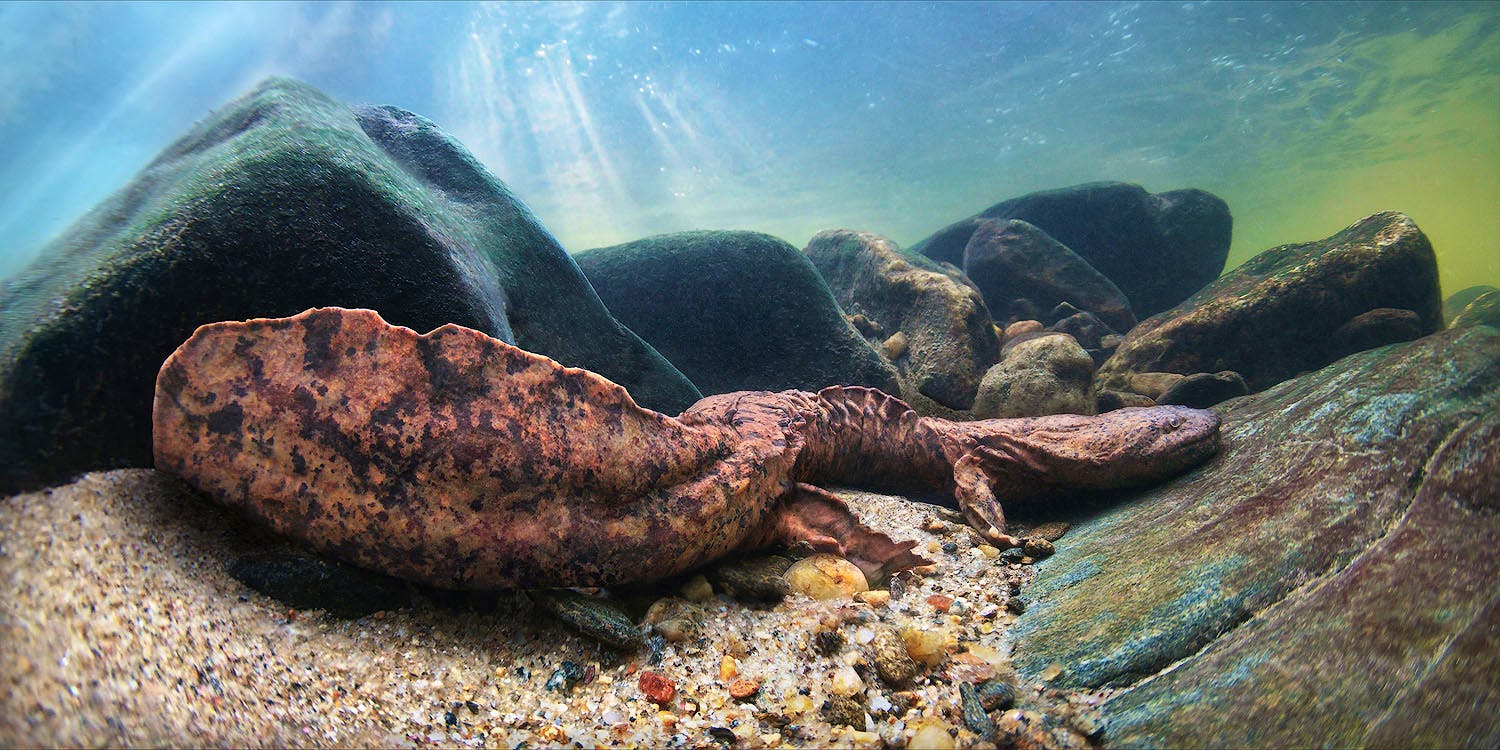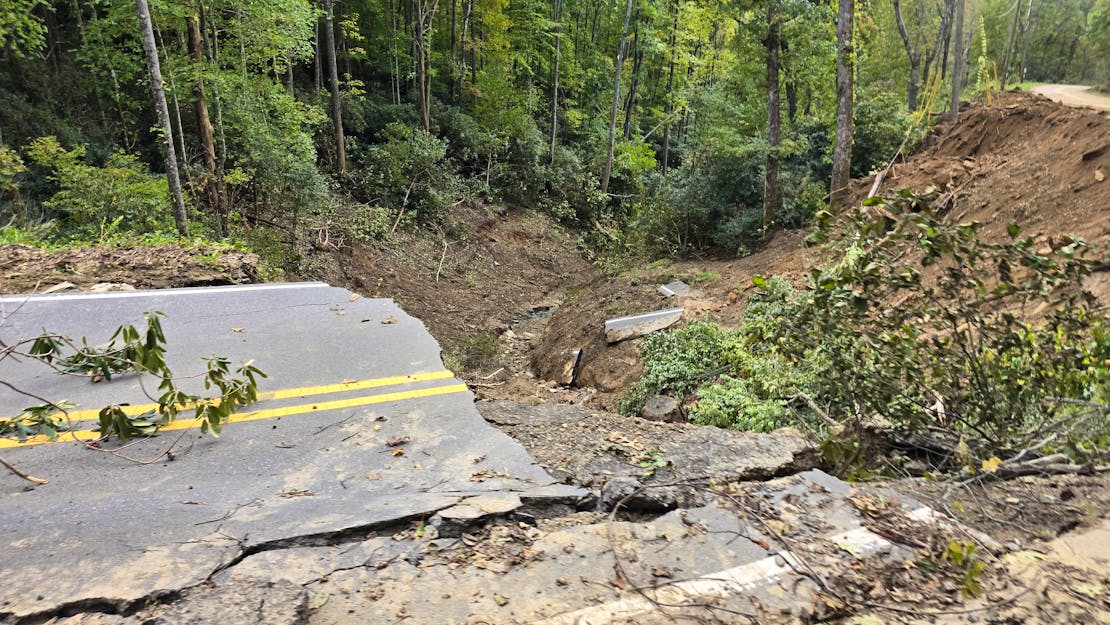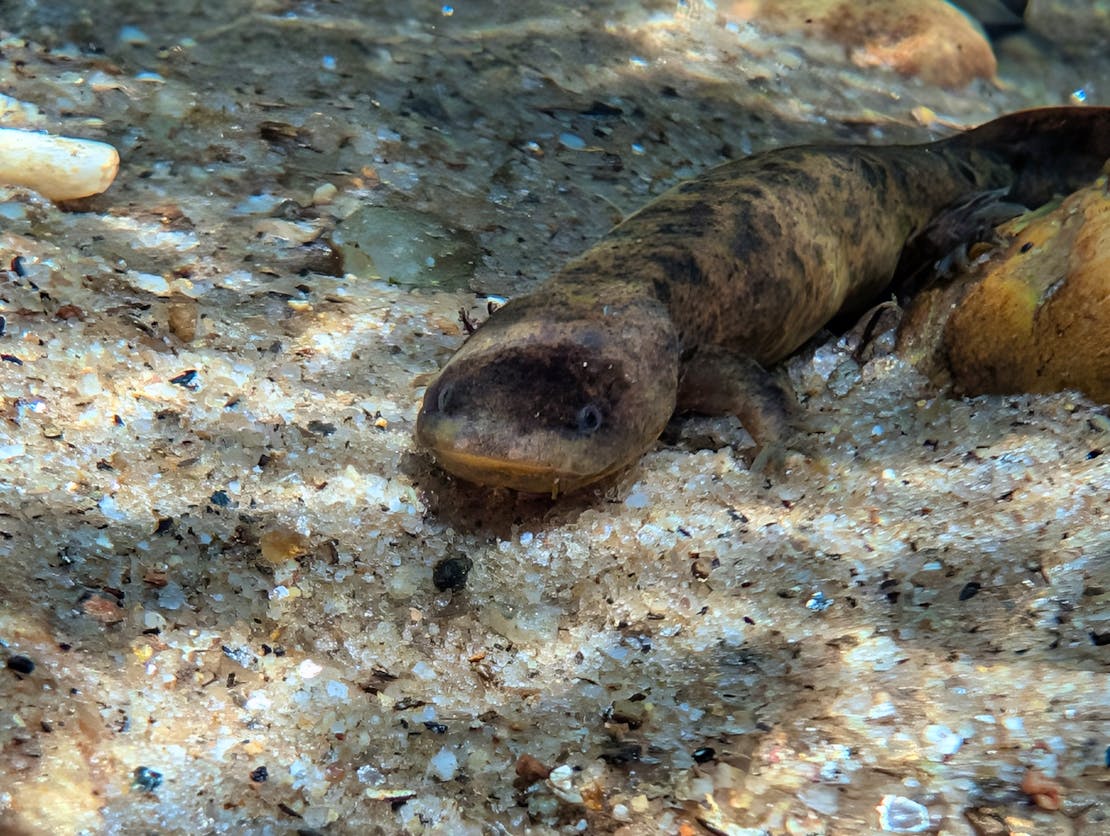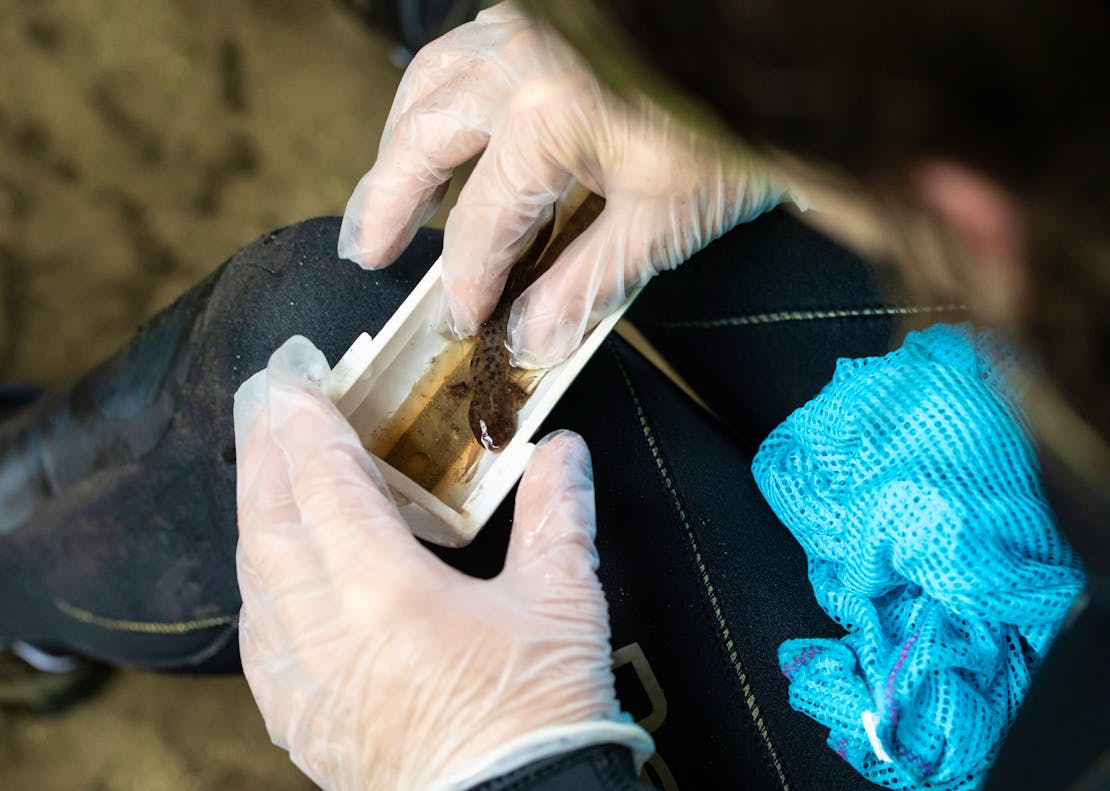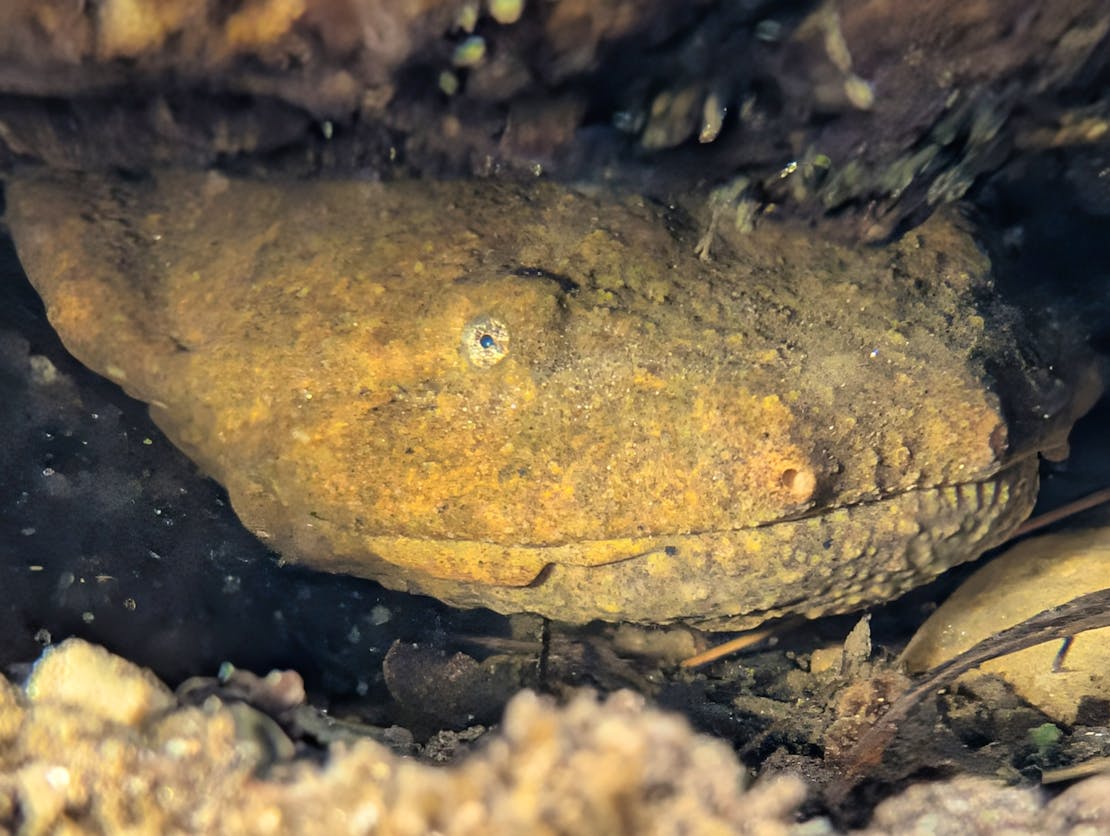This blog was written by Defenders of Wildlife Southeast Interns, Halle West and Zach Grady.
About a year after hurricane Helene rampaged through Western North Carolina, the terrain looks very different. The scars from the storm are still visible everywhere: uprooted trees along the interstate, scoured riverbanks, mountains of woody debris removed from rivers, roads and homes. In the trees lining the rivers, you can still see evidence of how high the water rose with muddy hats hanging from trees 15 feet above the water. But spring and summer has returned the color to the landscape.
The forests are thinner now but green. Telltale signs of regrowth mark the forest floor with knee and shoulder high plants and saplings soaking up the sun that filters through where tall trees once stood. The rivers are alive too. Aquatic insect larvae crawl across displaced river rocks, brightly colored native fish dart about in preparation for mating season and young salamanders hide beneath rocks on the riverbed. The mountain ecosystems of Western North Carolina are coming back!
What has happened to the rivers in the year since hurricane Helene?
There have been natural and human impacts on Western North Carolina’s rivers in the last year. When Helene swept through, some rivers were rearranged or restructured as rocks were swept downstream and trees caused logjams and new channels. In these last 11 months, life has adapted to the new layout. New river channels are creating new areas of sedimentation. Displaced rocks are making new habitat, while sediment pollution is destroying and altering other habitat, and making rivers more prone to flooding.
Cars, gas tanks, building equipment, clothes, toys, and even houses were washed into rivers by the floods and continued to float in the waterways even as the water settled. Chemicals, trash and contaminants from homes, gas stations and factories entered the water as well.
And while there have been some positive clean-ups conducted in the aftermath of Helene, some larger scale mechanized “clean ups” have been downright destructive. Since these use heavy equipment in the waterway to remove huge quantities of debris quickly, the machines crush and bury rocks — and the animals living among them — along the riverbed. These “cleanups” have also removed excessive amounts of woody debris, leaving riverbanks bare and vulnerable, and destroying habitat for river animals.
How has hellbender habitat, specifically, been affected?
Hellbenders were imperiled prior to Helene due primarily to habitat loss. They live in oxygen rich, cold rivers that flooded heavily during Hurricane Helene. Their habitat requires medium to large rocks on the riverbed for shelter from the current and predators, and the largest rocks are used for nesting. The movement of sediment during the storm made the water murky and buried habitat rocks. Furthermore, in some areas the river has an entirely new course and where there was once habitat, now there is not even a river.
In many places, however, the damage from the large-scale cleanup efforts was worse than the storm itself. Heavy machinery buried or broke hellbender nest rocks, churned up suffocating sediment and contaminated the water with hydraulic fluid and fuel.
Did the hellbenders survive Helene?
Yes! Summer surveys in the upper French Broad Watershed were conducted at sites where hellbenders have known populations. We were happy to find many of them persisted!
Some days we found as many as eight hellbenders in a single survey. Other days after a thorough search we only found buried rocks. It was also positive to find hellbenders of all ages. Some larvae were even sheltering beneath woody debris in the waterway from the hurricane.
What’s next for hellbenders?
Hellbenders are currently in their first breeding season post-Helene. The surveys that are underway and will continue through the fall will help gauge the health of various populations. Additionally, population surveys like the ones we conducted this summer will continue next year to give us even more data.
Human-powered cleanup efforts are also underway along hundreds of miles of Western North Carolina rivers and extensive stream restoration projects are on the horizon which will serve to improve, and in some cases, help create hellbender habitat. As heavy machinery debris removal continues, we will continue watching for and reporting on impacts.
Community members are encouraged to notify Representative Chuck Edwards of any such concerns by calling (223) FIX FEMA. Defenders’ will continue to push for Hellbenders to be listed as endangered under the Endangered Species Act, which will provide necessary resources and increase protection of their habitat.
